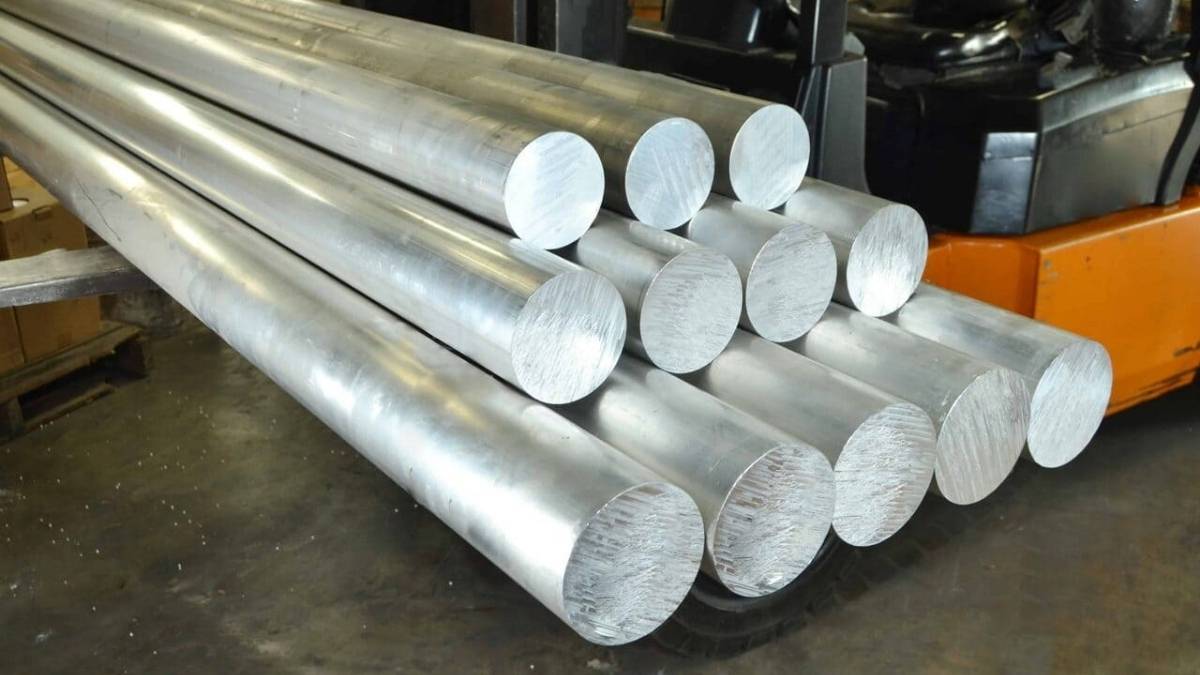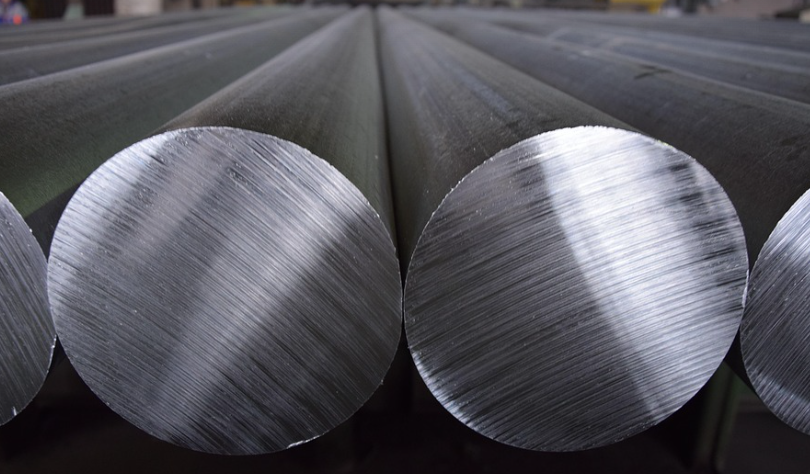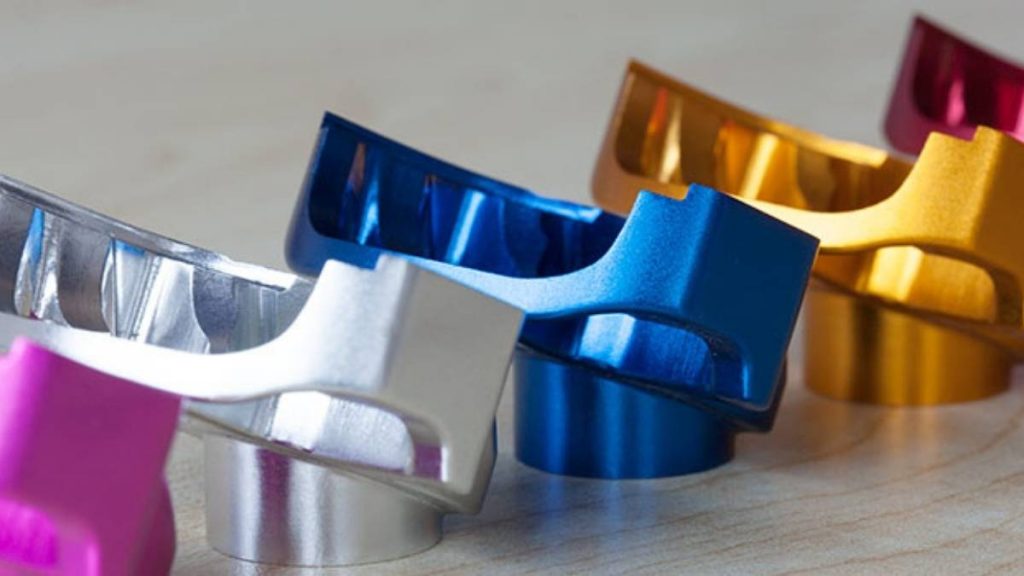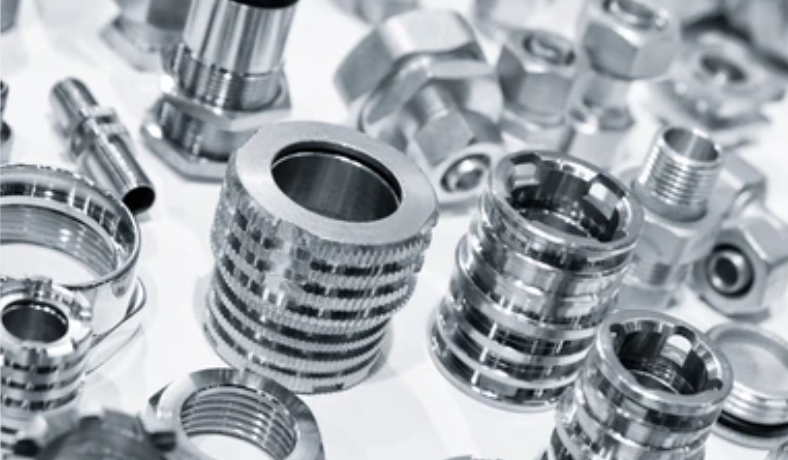
Aluminum alloys are important in several major industries, i.e., aerospace, automotive, construction, electronics, and packaging. Their ability to resist corrosion, strength, and lightweight nature allows engineers to choose the right material for various tasks. The topic of this article includes an understanding of Aluminum alloys, a definition of grades and alloys, popular series, and classifications. It will also discuss manufacturing computer numerical control and surface finishing. No matter if you’re an engineer or just have a passion for Aluminum, this guide will explain the basic areas of Aluminum alloys.
It is the mixing of aluminum with other elements, such as copper, magnesium, manganese, silicon, and zinc, and occasionally trace amounts of other elements. They help make the alloy stronger, more flexible, less prone to rust, and simpler to machine. On its own, Aluminum is soft and requires reinforcement to be useful in most applications.

The terms are commonly used together, “grades” and “alloys” have certain differences.
So, in simpler words, the alloy is the recipe, and the grades are the quality of the alloy.
Grades and series organize the aluminum alloys with respect to their component composition and structural designs. Relying on this system, the ideal alloy can be selected for different purposes. Alloys can be wrought or cast. We label its each type by a four-digit code and an additional temper description.

Alloys known as wrought are shaped by methods such as rolling, extrusion, or forging and given a number after the prefix (e.g., 6061 or 2024). We can identify elements added with metal by the first number on the code. Because they are both strong and versatile, these alloys are often used in the construction of buildings.
Castings are made in molds and designated by a four-digit number that includes a decimal (such as A380.0). They can accommodate complex shapes for automotive and machine components. This group of alloys is commonly strengthened by silicon, copper, and magnesium.
Temper codes describe how an alloy has been treated by heat or by machines. They change materials’ hardness, strength, and flexibility, and change their applications with respect to composition. They are like;
T6 – Solution heat-treated and artificially aged
H – Strain-hardened
O – Annealed (softest condition)
Grades of Aluminum are set worldwide, yet different parts of the world have different ways of referring to them. It includes a table comparing worldwide alloy names to their German DIN and European EN counterparts. Besides this, it explains the basic features of every alloy.
| International Name | German DIN | EU EN Standard | Description |
| Aluminum 2007 | 3.1645 | Al-CuMgPb | High strength, good machinability |
| Aluminum 2017A | 3.1325 | Al-Cu4Mg | High strength, aircraft applications |
| Aluminum 2024 | 3.1355 | AlCu4Mg1 | Aerospace-grade, fatigue-resistant |
| Aluminum 5052 | 3.3523 | Al-Mg4.5Mn | Excellent corrosion resistance |
| Aluminum 5754 | 3.3535 | Al-Mg3 | Marine-grade, good weldability |
| Aluminum 5083 | 3.3547 | Al-Mg4.5Mn | High strength, marine use |
| Aluminum 6060 | 3.3206 | Al-MgSi | Structural use, good surface finish |
| Aluminum 6061 | 3.3211 | Al-Mg1SiCu | Versatile, good corrosion resistance |
| Aluminum 6061-T6 | 3.3211 | Al-Mg1SiCu | Heat-treated, strong & machinable |
| Aluminum 6063 | 3.32206 | Al-Mg0.7Si | Architectural use, good finish |
| Aluminum 6082 | 3.2315 | Al-Si1Mg | High-strength, structural alloy |
| Aluminum 7050 | 3.4144 | AlZn6CuMgZr | Aerospace, high strength |
| Aluminum 7075 | 3.4365 | Al-Zn6MgCu | Very high strength, aircraft use |
| Aluminum 7075-T6 | 3.4365 | AlZn5.5MgCu | Heat-treated for maximum strength |
| Aluminum ADC12 (A380) | — | — | Cast alloy, automotive components |
| Aluminum MIC-6 | — | — | Stable cast plate, used in tooling |
A mixture of Aluminum with metals such as copper, magnesium, or silicon makes Aluminum alloys stronger, less corrosive, and more workable. They are separated according to both composition and production method—either wrought or cast. Alloys can be changed in different ways for specific applications in various businesses.
After this basic explanation, it’s good to know what affects aluminum alloys and what makes them suitable for different functions.

Must check the applications of the alloy used in different industries. It determines the choices of strength, corrosion resistance, and how easily it can be worked.
Must analyze the properties. I.e., mechanical strength. Each alloy has its own strength, resistance to fatigue, and hardness. How the structure and arrangement of muscles work matters to performance on tasks that are difficult or repeated.
There are alloys (such as the 5000 series) that protect against corrosion by themselves, and then there are alloys (like the 2000 series) that require protective coatings.
Some alloys are more accessible for welding and machining. In particular, materials in the 6000 series alloy group are weldable and easy to machine, so they can be used in various manufacturing processes.
Determine if the alloy needs heat treatment or can be strengthened by cold working. As a result, there are changes to how the part is processed and how it performs after production.
One reason Aluminum alloys are appreciated is that they are both lightweight and efficient at maintaining temperatures. You can see in this table which physical properties significantly affect Aluminum in everyday use.
| Property | Value / Range | Notes |
| Density | 2.6 – 2.8 g/cm³ | Varies slightly by alloy |
| Melting Point | 463 – 671°C | Lower than pure aluminum due to alloying |
| Thermal Conductivity | 120 – 230 W/m·K | High, useful for heat exchangers and electronics |
| Electrical Conductivity | 30 – 60% IACS | High in 1000 series alloys |
| Coefficient of Thermal Expansion | ~23.1 x 10⁻⁶ /°C | Can cause dimensional changes with temperature |
| Reflectivity (Visible Light) | ~80 – 90% | Excellent for optical and decorative use |
Its chemical behavior, particularly the resistance to oxidation and corrosion, helps decide the right use for Aluminum alloys in several settings. You can find essential facts about chemical characteristics in the table below.
| Property | Behavior / Value | Notes |
| Oxidation Resistance | Forms a protective oxide layer | Natural corrosion resistance |
| Corrosion Resistance | Good to excellent (varies by series) | 5xxx and 6xxx perform best naturally |
| Reactivity | High with strong acids/bases | Low reactivity at neutral pH |
| Alloying Elements | Cu, Mg, Mn, Si, Zn, Fe | Influence strength, corrosion, and machinability |
| Galvanic Corrosion Risk | Moderate when in contact with other metals |
There is a wide difference in mechanical performance, such as strength, flexibility, and resistance to repeated use, for different Aluminum alloys. This table lists essential mechanical properties needed for use in structures and engineering loads.
| Property | Value / Range | Notes |
| Tensile Strength | 70 – 600 MPa | Depends on the alloy and temper |
| Yield Strength | 30 – 550 MPa | Higher in heat-treated alloys (e.g., 7075-T6) |
| Elongation at Break | 5% – 30% | 1000 and 3000 series have higher elongation |
| Hardness (Brinell) | 20 – 150 HB | Softer in the 1000 series, harder in the 7000 series |
| Fatigue Strength | 40 – 300 MPa | Critical in aerospace applications |
| Modulus of Elasticity | ~70 GPa | Lower than steel (200 GPa) |
Each collection of Aluminum alloys gets its name from its main alloying component, which defines its main characteristics. The following table explains the usual features, uses, and examples for every series.
| Alloy Series | Composition / Major Alloying Element | Properties | Typical Applications | Example Alloys |
| 1000 | Min. 99% Aluminum | Excellent corrosion resistance, high thermal/electrical conductivity, very soft and ductile | Electrical conductors, chemical equipment, food and chemical packaging, decorative applications | 1050, 1060, 1100 |
| 2000 | Aluminum-Copper | High strength, fatigue resistance, and lower corrosion resistance | Aerospace, military vehicles, and high-performance automotive parts | 2007, 2017A, 2024 |
| 3000 | Aluminum-Manganese | Good corrosion resistance, moderate strength, excellent workability | Roofing sheets, siding, cooking utensils, heat exchangers | 3003, 3105 |
| 4000 | Aluminum-Silicon | Good wear resistance, lower thermal expansion | Automotive engine components, wear plates, welding wires | 4032, 4045 |
| 5000 | Aluminum-Magnesium | Excellent corrosion resistance, good weldability, medium strength | Marine structures, pressure vessels, transportation | 5052, 5754, 5083 |
| 6000 | Aluminum-Magnesium-Silicon | Good strength, corrosion resistance, machinability, and weldability | Structural framing, bridges, pipelines, and automotive parts | 6060, 6061, 6063, 6082 |
| 7000 | Aluminum-Zinc | Very high strength, good fatigue resistance, lower corrosion resistance | Aerospace, military, and sporting equipment | 7050, 7075, 7075-T6 |
| Special: ADC12 (A380) | Aluminum-Silicon | Good castability, moderate strength, corrosion resistance | Automotive components (die-cast parts) | ADC12 (A380) |
| Special: MIC-6 | Precision Cast Plate | Excellent flatness and dimensional stability | Tooling plates, mold bases, and CNC-machined fixtures | MIC-6 |
Aluminum alloys can be formed by working machinery (wrought) or casting in molding equipment. In this table, we identify the structure variations, how both work, and what tasks are often performed by each.
| Aspect | Wrought Alloys | Cast Alloys |
| Manufacturing Method | Mechanically worked (rolled, extruded, forged) | Formed by pouring molten aluminum into molds |
| Grain Structure | Fine-grained, worked structure | Coarse-grained, cast structure |
| Mechanical Properties | Generally higher strength and ductility | Can have good strength, but is typically more brittle |
| Surface Finish | Smoother surface finish | May require machining for finish |
| Applications | Aerospace parts, automotive panels, structural members | Engine blocks, pump housings, complex shapes |
| Example Series | 1xxx–7xxx series | 1xx.x–7xx.x series |
There are two ways to strengthen Aluminum alloys: by heat treatment or by cold working the metal. The table outlines various alloy groups and the places where they are most used.
| Aspect | Heat-Treatable Alloys | Non-Heat Treatable Alloys |
| Strengthening Method | Strengthened through heat treatment (solution heat treated and aged) | Strengthened through cold working (strain hardening) |
| Mechanical Strength | Higher potential strength | Lower strength compared to heat-treated ones |
| Formability | Lower formability (after treatment) | Excellent formability |
| Corrosion Resistance | Varies by alloy, often needs cladding or coating | Typically, better natural corrosion resistance |
| Example Series | 2000, 6000, 7000 series | 1000, 3000, 5000 series |
| Applications | Aerospace, automotive structural parts | Roofing, marine applications, cookware, packaging |
Here are some methods we can use to make aluminum alloy parts;

Machining of Aluminum alloys into parts requires strict size and shape control. Frequently chosen for use in aerospace, automotive, and electronic products.
We can produce aluminum sheets using cutting, bending, and assembly. Aluminum can be found on roofs, in car panels, and in appliances.
Aluminum composites or fine Aluminum powders combined with epoxy resin are the main application, compared to pure Aluminum.
Liquid Aluminum plastic is injected rapidly into molds filled with air. Allows the production of complex shapes and a beautiful final surface. Applicable to engine blocks as well as housings.
Manufacturers use vacuum die casting for prototypes and tiny Aluminum batches.
Aluminum powder is often used in composite materials when pressed into a resin matrix.
Let’s discuss the finishing options we can opt for the aluminum alloy part.;

Electrolysis is applied to create a large protective and beautiful layer that stops corrosion and adds wear resistance. The available colors are natural, black, bronze, blue, and some others.
By shooting small beads at the top, the treatment prevents light from reflecting, covering any perceived flaws.
It generally reduces Corrosion and Wear. Besides this, the nickel-phosphorus layer becomes uniform by simply dipping the part, increasing both chemical resistance and durability.
It shows the effect on the electrical and corrosion properties. Here, coating an electronic or ornamental material with a light layer of gold increases conductivity and stops it from rusting.
It usually serves to protect and make things look better. Once dry, you can spray powdered paint on Aluminum and bake it. So, you can produce colorful, strong, and resistant finishes,
The following are the applications of aluminum alloys;
1.Aerospace components
2.Both automotive parts and body panels are treated like art.
3.Craft and features found in the marine environment
4.Cans and/or foils
5.Power supply systems make use of electrical cables and conductors.
6.Materials involved in building and construction
7.The industry includes consumer electronics and appliances.

Here are some of its pros;
1.Easy to carry and sturdy
2.Very strong against corrosion
3.The material is easy to machine
4.Steel shows remarkably high thermal and electrical conductivity.
5.Good for the environment and simple to recycle.
It offers the following limitations;
1.Lighter than steel
2.More valuable than certain other metals
3.A few alloys are not great for welding.
4.In specific conditions, these metals are vulnerable to wear and galling.
5.Less fatigue strength compared to many other steels.
Here are some of the ways you can use while selecting the best aluminum alloy;
1.Requirements in application: Take into account strength, corrosion resistance, CE, and machinability.
2.Environmental Factors: What kind of environments will the material be in?
3.Required Mechanical Characteristics: Tensile strength, ability to resist fatigue.
4.Producing method: Casting or shaped by a forge, and whether it can be heat-treated.
5.Efficiency and Budget: Make sure that you get the most value for your investment.
Many industries rely on Aluminum alloys due to their numerous excellent properties and diverse uses. Examining alloy series, grades, properties, and methods of alloy production makes it easier to determine which metal is best suited for your project. Besides this, modern surface finishing and manufacturing techniques make Aluminum parts more useful and attractive. You can trust Aluminum alloys to give you a flexible, reliable, and eco-friendly way to build parts for both air and sea applications.
What is the best-performing Aluminum alloy?
The 7075-T6 Aluminum alloy from the 7000 series is one of the strongest around.
Can you weld aluminum alloys?
Both the 5000 and 6000 series Aluminum alloys are commonly welded without any problems. The 2000 and 7000 alloy series are especially tough to work with.
What makes some alloys heat-treatable, whereas others are not?
The strength of heat-treatable alloys improves by heating and cooling, whereas non-heat-treatable alloys are designed for cold forming.
What type of Aluminum alloy stands out for use in marine situations?
You should use 5052 and 5083 in the 5000 series because they have the most corrosion resistance.
